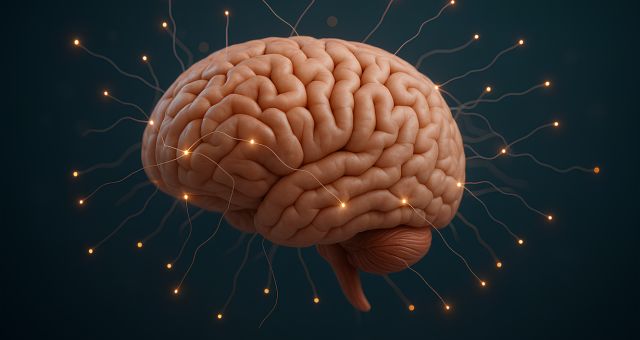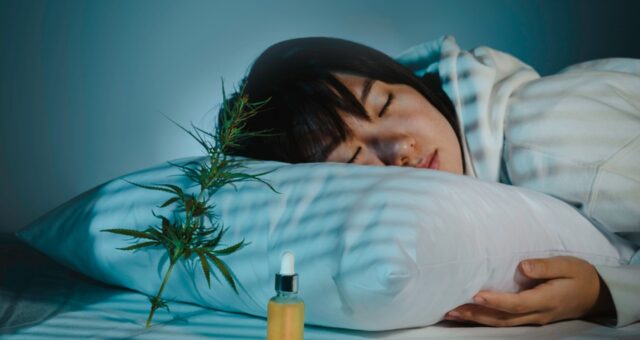Medically Reviewed by Lucas Rosa, PhD in Molecular Biology
When you hear the word endorphins, chances are you think of happiness, a “runner’s high,” or the satisfaction after a good belly laugh. But these natural chemicals do a lot more than just make you feel good.
In fact, they play a critical role in balancing your mood, reducing stress, and even supporting hormone health.
In this blog, we’re diving into the world of endorphins – what they are, how they’re produced, why they matter, and how to naturally keep them in balance.
Whether you’re dealing with stress, looking to feel more energized, or simply want to understand your body better, learning about endorphins is a great place to start.
What Are Endorphins?
Endorphins are chemicals produced naturally by your brain and nervous system. The word “endorphin” comes from endogenous morphine, which basically means “natural painkiller made by the body.” These molecules bind to specific receptors in the brain (called opioid receptors) and block pain signals while creating feelings of pleasure or euphoria. (1)
Think of endorphins as your built-in mood boosters and pain relievers. They’re part of your body’s stress response, but in a good way, helping you feel calm and balanced during tough moments.
How Endorphins Connect to Hormone Health
While endorphins themselves aren’t typical hormones, they work closely with your hormonal system:
- Reduces Cortisol: Endorphins help lower stress levels. High stress levels can throw off everything from your fertility to your sleep. (2)
- Supports Dopamine and Serotonin: Endorphins are known to boost dopamine and serotonin production which play a role in mood, motivation, and energy. (3)
- Balances Reproductive Hormones: Post-exercise endorphin release in women helps keep luteinizing hormone and follicle-stimulating hormone levels in balance by reducing emotional and physical stress. (4)
When your body produces a steady flow of endorphins, it creates a ripple effect that benefits your whole hormonal system.

Why Are Endorphins Pain Relievers?
Even though endorphins are technically neurotransmitters (not hormones in the traditional sense), they often get grouped with hormones because of their powerful effects on mood and well-being. Here’s why they’re called pain-relieving hormones:
- They elevate mood and promote a sense of happiness or relaxation.
- They reduce pain naturally – like when you scrape your knee but don’t feel it until later.
- They buffer stress, helping you cope with emotional or physical challenges.
- They can even boost self-esteem and increase mental clarity.
What Triggers Endorphin Release?
Your body produces endorphins in response to a variety of activities and situations, especially those that involve movement, connection, or even slight stress (in a positive way). Here are some common endorphin-boosting activities: (5)
- Exercise: Physical activity, especially cardio like running, swimming, dancing, or cycling, is one of the best ways to release endorphins. That’s why people often feel a “high” after working out.
- Laughter: Laughing isn’t just fun – it’s therapeutic. Genuine laughter (not just a polite chuckle) can trigger the release of endorphins and improve your mood.
- Listening to Music: Certain types of music, especially ones you enjoy deeply, can stimulate endorphin release and help with emotional processing.
- Physical Touch: Hugs, cuddling, massage, or even petting your dog can boost endorphin levels. Physical touch builds connection and signals safety, which helps your body relax.
- Eating Spicy Food: Believe it or not, spicy foods can stimulate pain receptors in your mouth, which tricks your body into releasing endorphins as a coping mechanism.
- Meditation and Mindfulness: Deep breathing, yoga, and meditation all help calm the nervous system and increase endorphin activity. These practices also help lower chronic stress.

The Functions of Endorphins
Beyond making you feel good, endorphins play some powerful roles in keeping your body balanced and resilient. (6)
- Pain Relief: Endorphins are nature’s painkillers. They act like morphine, binding to pain receptors in your brain and reducing your perception of pain, especially during injury or intense physical activity.
- Stress Regulation: When you’re under pressure, your body releases both stress hormones (like cortisol) and endorphins. Endorphins help counteract the negative effects of stress and restore emotional balance.
- Boosting Immunity: Research suggests that healthy endorphin levels support a stronger immune response. Chronic stress or low endorphin levels, on the other hand, can weaken your body’s defenses.
- Enhancing Mood and Motivation: People with low endorphin levels may experience symptoms like sadness, irritability, or a lack of motivation. Balanced levels support positive emotions, mental energy, and resilience.
- Supporting Hormonal Balance: Endorphins indirectly influence other hormones in your body. By keeping stress in check, they help stabilize systems like the thyroid, adrenal glands, and reproductive hormones.
Signs You Might Be Low in Endorphins
While we don’t measure endorphins on a blood test like we do for other hormones, certain patterns might suggest that your levels are running low:
- Frequent sadness or mood swings
- Low pain tolerance
- Feeling unmotivated or emotionally “flat”
- Difficulty enjoying things you used to love
- Craving sugar or spicy foods (your body’s attempt to self-regulate)
If these symptoms sound familiar, don’t worry because there are natural ways to give your endorphins a boost.
How to Keep Your Endorphins Balanced Naturally
You don’t need expensive supplements or complicated protocols to support your endorphins. Here are practical, everyday strategies to raise them naturally:
Practice Regular Movement: Aim for at least 30 minutes of moderate exercise a few times a week. Pick something you enjoy – dancing, jogging, brisk walking, or even a fun home workout.
Prioritize Joy and Laughter: Watch a funny movie, spend time with friends who make you laugh, or revisit memories that bring you joy. Laughter is truly medicine.
Get Creative: Painting, writing, crafting, or playing music can light up your brain and promote endorphin release. Don’t worry about being “good” – just enjoy the process.
Connect with Animals: Spending time with pets can trigger emotional bonding and endorphin release. Even watching cute animal videos can give your mood a lift!
Soak Up Some Sun: Sunlight helps regulate endorphins and boosts vitamin D levels, which also impacts mood. Try to get outside during the day, even for just 15 minutes.
Eat Nutrient-Dense Foods: Protein-rich foods (like eggs, chicken, lentils, and seeds) provide amino acids that help your brain make endorphins. Also, aim for a colorful, anti-inflammatory diet to support overall hormone health.

Conclusion
In a world where burnout, stress, and mood imbalances are common, understanding and supporting your endorphins is a game-changer.
From pain relief to better sleep to sharper focus, endorphins make life feel more vibrant. And the best part? You don’t need a prescription or a visit to any healthcare specialist.
Start small, have fun with it, and watch how your mood and hormone health transform.
References
- Cleveland Clinic. “Endorphins: What They Are and How to Boost Them.” Cleveland Clinic, Cleveland Clinic, 19 May 2022, my.clevelandclinic.org/health/body/23040-endorphins. https://my.clevelandclinic.org/health/body/23040-endorphins.
- Taylor T, Dluhy RG, Williams GH. beta-endorphin suppresses adrenocorticotropin and cortisol levels in normal human subjects. J Clin Endocrinol Metab. 1983 Sep;57(3):592-6. doi: 10.1210/jcem-57-3-592. PMID: 6308033. https://pubmed.ncbi.nlm.nih.gov/6308033/#:~:text=In%20all%20subjects%2C%20cortisol%20levels,dl%20(1.0%20micrograms%2Fkg%20.
- Seo D, Patrick CJ, Kennealy PJ. Role of Serotonin and Dopamine System Interactions in the Neurobiology of Impulsive Aggression and its Comorbidity with other Clinical Disorders. Aggress Violent Behav. 2008 Oct;13(5):383-395. doi: 10.1016/j.avb.2008.06.003. PMID: 19802333; PMCID: PMC2612120. https://pmc.ncbi.nlm.nih.gov/articles/PMC2612120/.
- McArthur JW. Endorphins and exercise in females: possible connection with reproductive dysfunction. Med Sci Sports Exerc. 1985 Feb;17(1):82-8. PMID: 2984515. https://pubmed.ncbi.nlm.nih.gov/2984515/.
- Sprouse-Blum AS, Smith G, Sugai D, Parsa FD. Understanding endorphins and their importance in pain management. Hawaii Med J. 2010 Mar;69(3):70-1. PMID: 20397507; PMCID: PMC3104618. https://pmc.ncbi.nlm.nih.gov/articles/PMC3104618/.
- Chaudhry, Shazia R, and Benjamin Kum. “Biochemistry, Endorphin.” National Library of Medicine, StatPearls Publishing, 29 July 2019, www.ncbi.nlm.nih.gov/books/NBK470306/. https://www.ncbi.nlm.nih.gov/books/NBK470306/.
Check Out
HF Swaps
Better products for better hormone health.









